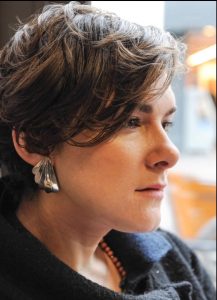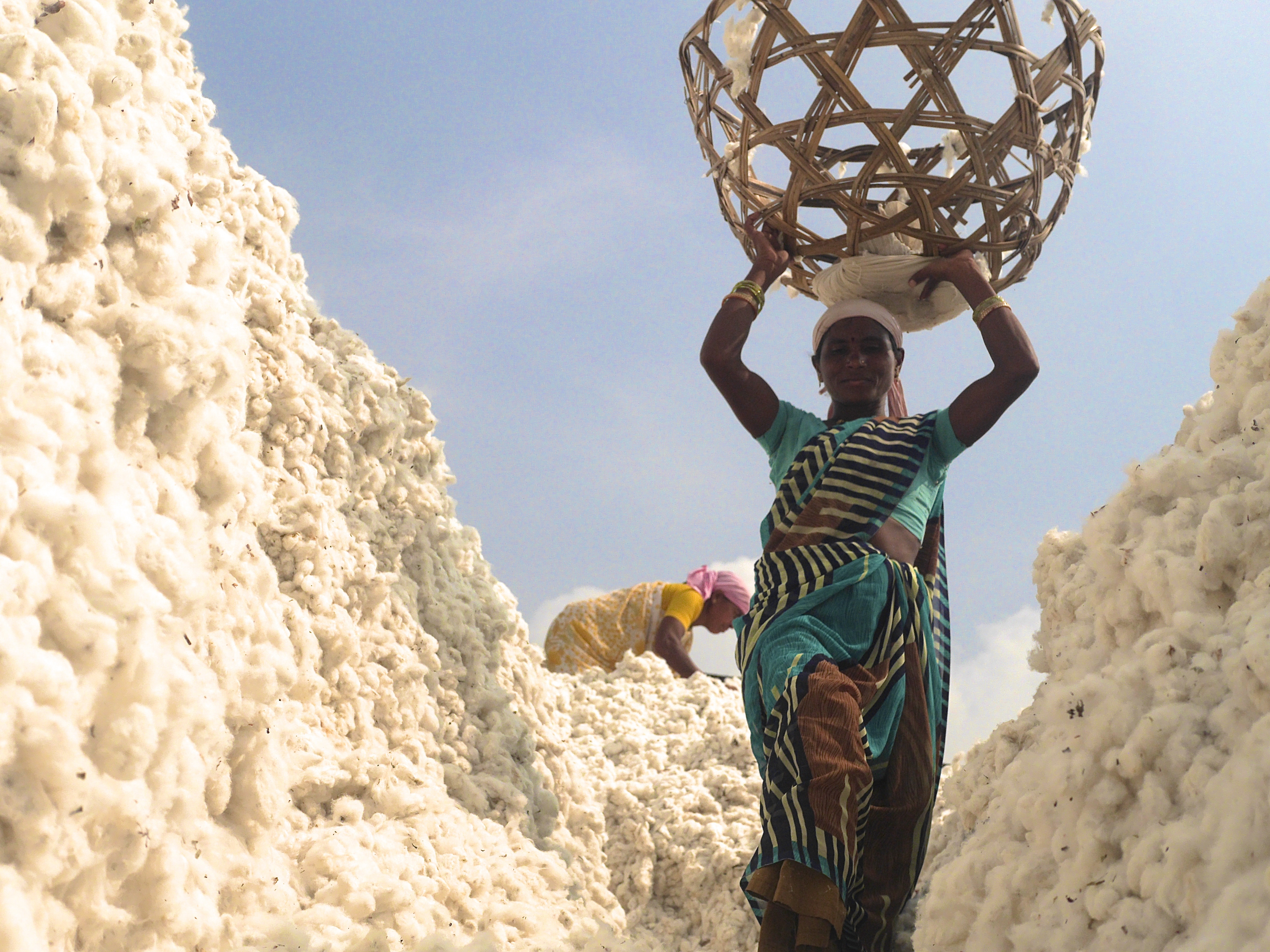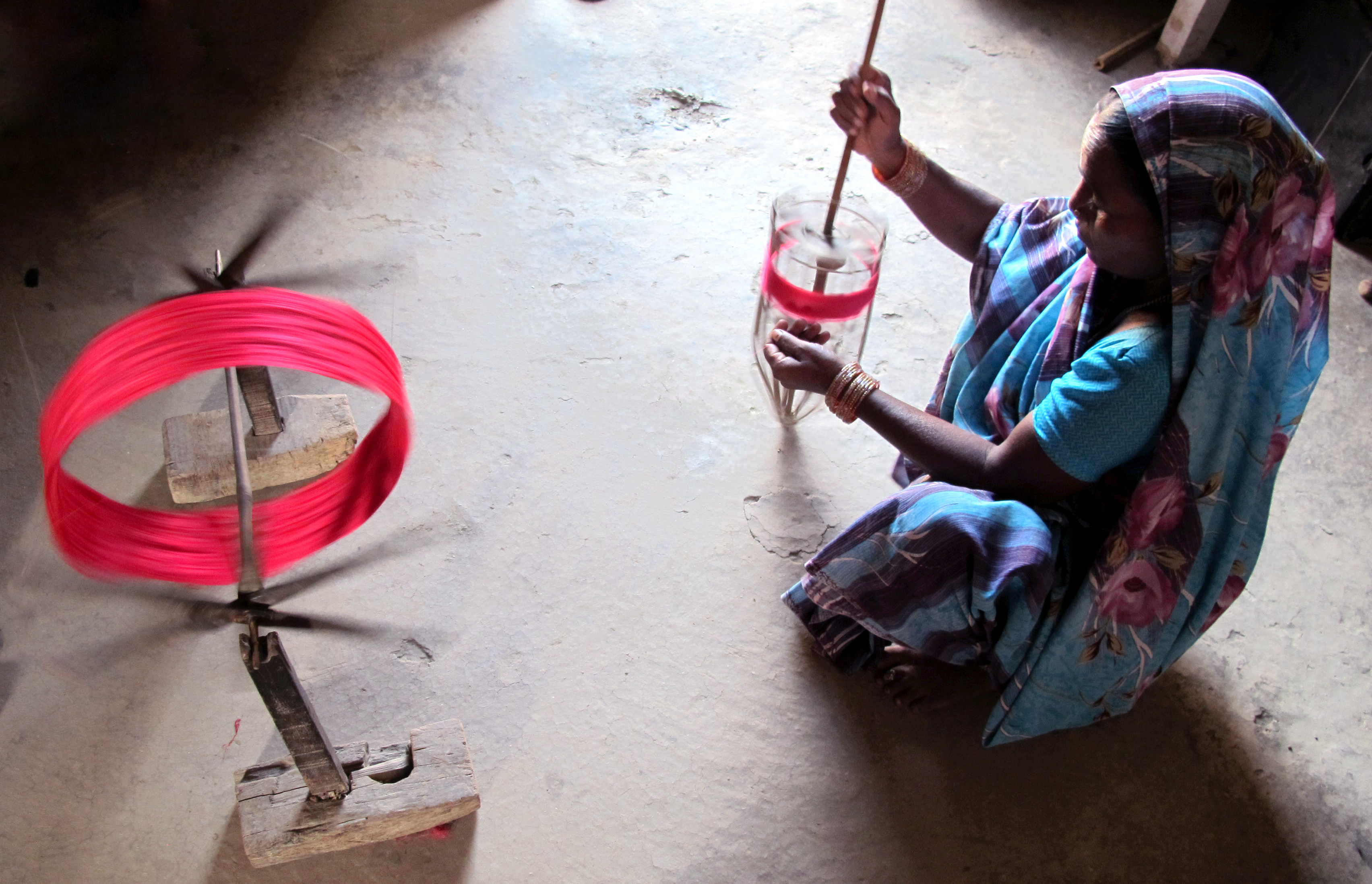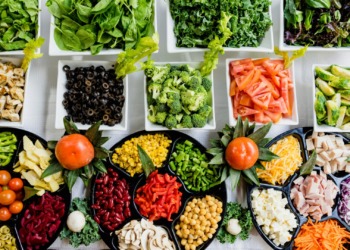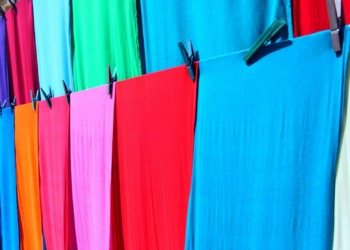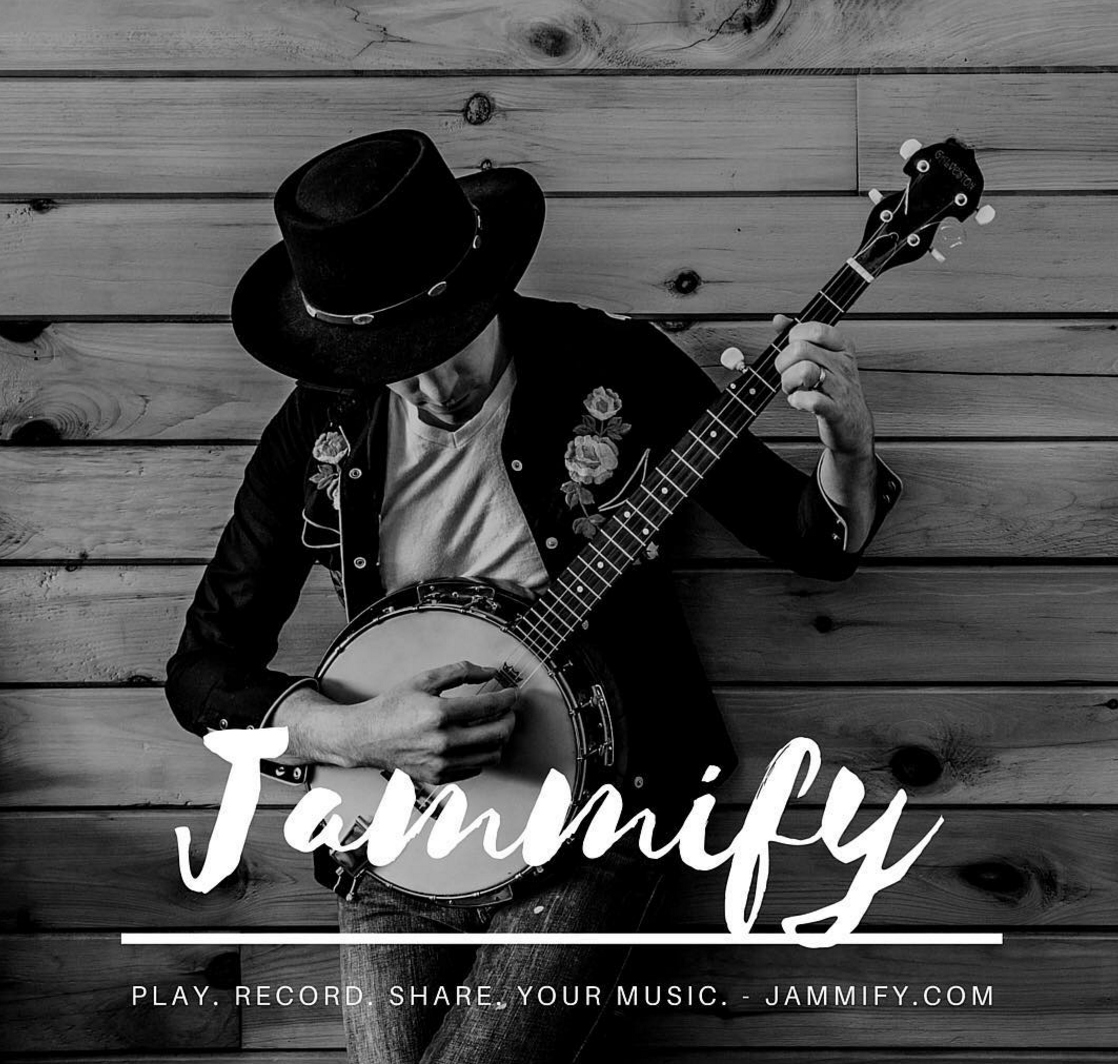When we think of fashion, we think of our favorite brands and prized pieces. We use fashion as a representation of our identity and to express ourselves. A dynamic player in a global marketplace, fashion is one of the most labor-connected industries in the world. It is also, one of the most wasteful. The average American throws away 82 lbs of textile waste each year. Most of this is non-biodegradable and will sit in landfills for more than 200 years. Fashion is the second largest polluter in the world, second only to oil. Creating conversations are the first step to socially conscious, informed consumers. Fashion is a $1.2 trillion global industry, and with more than $250 billion spent annually on fashion in the United States, it’s time we start having these conversations.
Project JUST is centered around just that, presenting information regarding a company’s sustainability, transparency and supply chains to create conversations and heightened awareness between the consumer and the brand. Founded by Natalie Grillion and Shahad AlShehail, two former Global Fellows with Acumen, they set out to change the status quo. For Natalie, seeing this sustainable, impactful work by farmers and the region as a whole in Uganda during her fellowship, she was determined that these stories should be told, “So that people who are buying the t-shirts or the bedsheets made with this cotton should know the story.” Natalie and Shahad shared their ideas over a meal and later that month, Rana Plaza collapsed. Hearing almost 1,200 people had perished, she thought, “what a disservice this is to these farmers, what a dishonor it is to the work that they’ve done that we don’t know where this cotton is ending up and all the positive impacts they are contributing, is it going to end up in a really negative place like a factory like this?” Realizing that both the good and the bad stories had yet to be told, Shahad and Natalie decided to research the market determine what was happening across the industry, and so Project JUST was born.
With a focus on empowering shoppers, Project JUST became a catalog of stories where shoppers, supply chain actors and more are invited to contribute to enhancing transparency across the industry. Project JUST is a platform that allows anyone to share, listen, and create conversations with others and with brands. They are currently crowdfunding since their launch last December with Indiegogo to change the way we shop and empower shoppers with more information.
We believe that once shoppers have this information, we do truly believe in the good of humanity that people will start to make better informed decisions. From there, we can start to see a shift in supply chain practices … because with every choice the shopper is making, you start to see that having an effect on their everyday choices which can lead to an accumulation of real change.
I had the opportunity to speak with Natalie last fall before the launch of Project JUST to explore the impact of such a platform, below are highlights of our conversation.
Project JUST is changing transparency in fashion; is there a need to enforce supply chains to have better practices?
Natalie Grillon: I think we know there is negative stuff in many of these supply chains but there are also a lot of positives as well. We are trying to create a space for both to be acknowledged, trying to be transparent. Our catalogue is very humble in that for many of these brands it has been very difficult to find information. Their supply chains are very opaque – we wonder, in many cases, do the brands themselves know what is going on in their supply chains and I think we would find in some cases that the answer is no. This is meant to be a positive, encouraging step in the right direction to help them find out this information. But also, you’re right, put a little pressure in the sense of ‘we are really trying to make this information available to everyone.’
You curate brands that maintain high standards for labor and the environment, how do you choose which brands to highlight and why?
N.G.: We do two things, on our social media and on our blog we provide features on these brands that we think are really having a positive impact. We look at what it is that they deem a positive impact which can be very contextual, so we look for basics that are an easy indicator for us such as a fairtrade symbol, an organic symbol, or partnering with other organizations such as the Ethical Fashion Initiative, who we know have high standards and high rigor in terms of what they deem as positive in terms of impact. The other thing that we look for is to what extent are they thinking about their particular community and what will be most impactful for them.
In terms of curation, it’s high design and quality product that is paramount to us. We are not going to feature someone just because they started making something with milk fabric or because they have a new innovative way to do denim. We do have a certain sensibility in terms of style and aesthetic that we appreciate and we like to feature. The idea of the directory and online platform is that in the long term, we intend to have as many brands as possible so that we can have transparency across the industry, so the style and the aesthetic will come through more in our features and in our social media.

Photo Credit: ProjectJUST
Ethical fashion has gotten a bad rap to a certain extent. It’s like, “Oh it’s hemp clothing” or “It’s stuff the hippies wear.” Obviously the conversation has advanced beyond this, but there are still people who have this image in their head that for fashion to be ethical and sustainable it will not be stylish as well. We really place an emphasis on the fact that some of the most sustainable and ethical brands out there are making the coolest, most stylish, interesting stuff that you can find. Look at Reformation, who at their heart are motivated by killer clothes that don’t kill the environment. We did a feature last year on Vaute Couture and all of their coats are stylishly cut, flattering to the figure, and they are completely vegan approved. Of course, there are steps that needs to be taken for some of the brands, but for most part we are excited about all of the beautiful stuff that is coming across our plate.
Project JUST is about telling stories … can you highlight a specific positive story that you have?
N.G.: One that comes to mind is a company called LOOMSTATE, they were one of the first brands out there making organic cotton t-shirts. Their stuff is high quality, good cut, and they also work closely with a brand called Rogan. Just some of the first out there who said they wanted to do something different with their supply chains. Because of that, they have now created a completely traceable organic cotton supply chain from the shopper all the way down to the farmer. The brand works very closely with these farming communities to help them improve their practices and their capacity in terms of organic agriculture. Then, they have worked one step up with the spinning facilities and then with the cut and sew facilities as well. We think that not only is it a beautiful quality, they also have actively sought to understand and to partner with these communities. There really are people that are directly associated with your t -shirt. I love that because I think that’s what we need to get back to.
Related article: “SWEDEN: THE WAVE OF YOUNG ECO-FASHION ENTREPRENEURS”
Another brand that comes to mind, (partly because we just love kids) is BERUkids which launched deadstock materials last year all made in LA. They make cute bomber jackets for the kids and haram pants. Using adult designs, they made them kid friendly which is adorable in that they have leopard prints (with actual leopards on the pants). They also give back a percentage of their profits to some community organizations in East Africa because they believe that kids wherever they are in the world should just be able to be kids. And so, their impact is not only in terms of their sustainability to their operations but also thinking about how they can do good as well.
Those are two we have come across that we really love- there are so many out there and we are excited to be releasing them as well, highlighting all of these stories, but really, the positive brands, because there is just so many beautiful things being done out there and people are unaware that these alternative choices exist.
Here we all are with the ability to every day, make purchases that can create the world that we want to have.
Photo Credit: ProjectJUST
I think the hardest issue for most consumers if they are interested is that they are not sure where to look. So, you have this open catalogue. How does this research process first start when you are looking into the supply chains for a company? Where are you getting this data and is this something I could find as a consumer without going through Project JUST?
N.G.: I think the first thing is that it’s a one-stop shop, so you can find all of the brands in one place. Both those that have done great work on their supply chains and those who haven’t necessarily. I think we like the idea that it’s all in one place. Because when you are looking for this information, it’s difficult to dig through it all – when we do research on the brands the first thing that we do is that we dig into their website. The research takes a really long time, there is so much dense material online, and in many cases some of it is platitudes talking and generalizations. We dig and then we follow up with the brands, asking them what they mean by this, what they mean by that …, etc. We say, “You said you committed to this in 2012, it’s 3 years later, what’s happened?” You find that some brands haven’t updated their CSR sustainability pages since 2011 or even earlier than that, like 2008. And then there are brands that don’t have one at all.
It is VERY difficult for the shopper to find information PERIOD. Even if you were to go to someone’s website and try to look for it. We dig through all of that. We do the follow up, we are really thorough in terms of reading their website and what they have publicly available, their 10k etc. Then, we do a multimedia search, we look at anything we can find in terms of press, tv shows (have they mentioned something about the brand), we try to cover everything we can in terms of NGO’s. There’s Greenpeace, there’s Detox Campagin there’s rank a brand, there’s an Australian ranking also tied with toxicity. So there’s all these different categories out there … water usage, human rights issues, pollution, chemicals. There are so many things that a brand has to think about in terms of their impact and their sustainability, so there’s a bunch of NGO’s working on this and we look into that as well.
Finally, we go to our expert committee, depending on the brands and their specific market we have a team of experts who we call upon to help us complete our research and back up what we have been able to find. They help us to do a final check of where we could be looking and then, we go to the brand and we say, this is what we’ve been able to find, what else can you offer us, and what do you have to say as well. So, we leave a space on the page for the brand’s voice to come through. The idea is that it’s open to comment and contributions from our online community whether they be workers who might work in a factory where the brand is made, whether they be an artisan who help to embroider the particular items, or if it’s just a shopper who has something to add as well that they’ve noticed in terms of their relationship to the brand. So, we hope that from putting all of this information online we will be able to get good pieces of information that are hidden so that we can have a more comprehensive snapshot of what the supply chain looks like. In the long-term, we are excited about additional opportunities to really dig further into these supply chains, visit some of the places, and have a team on the ground. We are just not that big yet but we hope that by having this information distilled and by aggregating it all in one place that it becomes the motivation for more of this information to come out.
For a full mindmap behind this article with articles, videos, and documents see #ProjectJUST
I have that problem myself trying to find clothing that is sustainable; it can be really hard to find those artisans, unless you are looking for larger brands. If you are looking for the smaller brands it can be difficult depending on where you live.
N.G.: It is difficult and we built this platform, the Project JUST platform for our friends after we realized we were telling all of these stories that people are asking us all of the time like, “What brands should I be shopping at?” And eventually, we said to ourselves, “Let’s put this online and make this accessible to everyone, to save us some time from writing all of these individual emails.” For you and your colleagues, there are 10 more or hundreds more who are searching for the same information and when you start to think about the next level which is people who are conscious of it, maybe they are not seeking it right now but if it was in front of them they would digest it, then you start to get to really big numbers. And that’s where we start to think that we can build upon that movement.
You touched on sustainability and how that can be at odds with the trends in fashion. Can you touch on this more?
N.G.: I wouldn’t say that it’s necessarily like that they are at odds, I think that there’s bad design across all different types of fashion. Some of the stuff that you find in fast-fashion stores, whether it be an H&M or a Walmart, you can find poor design there as well. But I do think that there is a perception across the universe of shoppers that with ethical fashion, they immediately think of, “Oh, for hippies, tree huggers, whatever.” I think that that’s part of our job is to dispel that myth.
For sustainability, we look at the social, environmental, community impact and the best-in-class standards across all of those. We also understand that what sustainability is for a small, artisan co-op in Peru is very different from sustainability at a large factory in southwest China. We really try to be conscious of that and look at size, how transparent they are being, their motives, their intentions, their management practices. We look at all of these factors when not only doing our all-stars and the brands you see on our social media but also on our platform. The platform we launched not only has some of these smaller, more ethically minded brands, but it also has a lot of big brands. We are trying to present the information while also understanding that it is very dependent on context.
The first step is to get this information out there, make it more transparent, and then coupled with that, make it cool to care and know the story behind where your clothing is coming from.
Photo Credit: ProjectJUST
Does Project JUST have the power to dispel that myth between sustainability and fashion in the mainstream or do you think this will stay in the upper echelons of fashion?
N.G.: No, our intention is very much to eventually hit the mainstream. We believe there is a huge amount of urgency in fixing this problem. Fashion touches so many people’s lives and so many different communities and has an enormous impact on the environment. And while on the one hand, we want to really help encourage and promote these smaller ethical brands who are doing incredible work, we also recognize that, on the opposite side of the spectrum we also need to bring some awareness to some of the negative impacts that fashion can have. And so, we emphasize the positives, but we are also aware that part of the movement has to be to say, “Well if they aren’t doing all of this positive stuff, what are they doing?” We have to engage the mainstream shopper in understanding that and creating a conversation there. The first step is to get this information out there, make it more transparent, and then coupled with that, make it cool to care and know the story behind where your clothing is coming from and start to reach these shoppers through the multiple channels through which they access information. I think that learning initially with this target group and then expanding from there, we can reach the mainstream.
There’s organic produce in Walmart now. So, that’s a prime example of something that initially was niche and with a positive social impact and a positive environmental impact went mainstream. So we definitely believe it’s possible.
Do you think sustainable fashion is a trend or do you think it’s going to become a more permanent lifestyle choice in the way we shop today?
N.G.: I don’t think it’s a trend. I think that it’s part of a generational shift millennials and the generation after us, we have grown up always hearing about Climate Change and human rights abuses and here we all are with the ability to everyday, make purchases that can create the world that we want to have.
I think that we are all disillusioned with the marketing and advertising and lack of authenticity that has been presented to us from different avenues. I think we are savvy and attuned and we are looking for the real stuff. We are looking for transparency and authenticity. That’s why you are seeing the brands that keep this in mind be successful. Everlane is taking off, Reformation is taking off, Whole Foods is struggling a little bit right now, but think about how they grew. Those brands that are making those choices, shoppers are flocking to them and no, they are not completely taking over right now but there is a reason that H&M markets it’s conscious campaign/collection like it’s all they sell because they know that is what people are looking for. So, I don’t think it’s a trend, I think it’s a shift. I think that the ethical fashion community as a whole does too – it can’t just be trend. It has to change. Because if it doesn’t, you have an enormous industry that is feeding into trends that can’t continue because it means terrible things for this generation and the next in terms of what we’ve left for them on this planet.
Do you think information is the only thing that’s needed, that’s left for us to bridge that gap and become a world that is more conscious in the way we shop? Or, do you think something else needs to happen?
N.G.: I think information is a part of it. I think you also have to have the designers who are out there making choices to starting or shifting their brands to be more sustainable and more ethical and we hope the information that we provide shoppers helps encourage them to do so. I think investment, the capital to improve some of these supply chains is imperative. I think government regulation plays a huge role as well. You have governments in many countries where much of the fast-fashion is produced, these governments are sort of looking the other way because it means economic development for their country and it means that they can grow, but the United States has rules about labor conditions and safety conditions for a reason and so, that has to change as well. There are so many things that are important and we’re focused on empowering the shopper, but we realize that we are a part of a multi-pronged effort to shift this industry in a positive direction.
What’s next for Project JUST, what can people do now and how can they help your efforts moving forward?
N.G.: We would love for people to log on to our platform, leave their questions, ask the brands, tag people who they know work in fashion or who they know work in these countries where some of the destruction is happening so that we can get more information. Continue to learn and educate yourself and have conversations about how you are shopping with your friends and your family. The very immediate thing that people can do in terms of their habits is just to think about every purchase and to want to know the story behind it and the value that item should be valued at because of the hands and resources and everything that went into it.
Recommended reading: “Fast-Fashion Is the Second Dirtiest in the World, Next to Big Oil”
_ _



